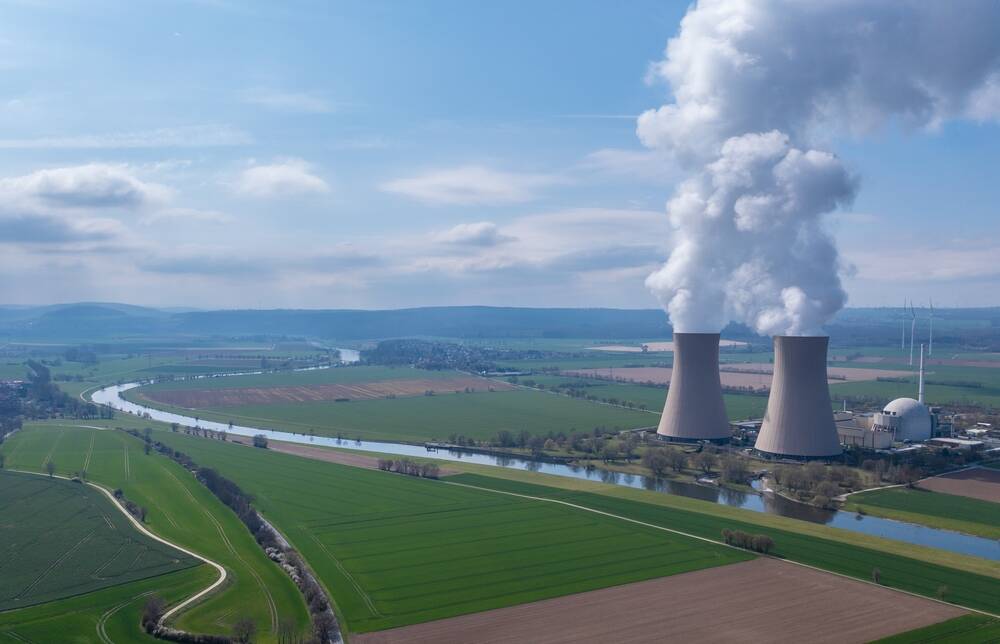Swedish Datacenter Operator Wants To Go Nuclear

A datacenter in Stockholm could be powered by a small nuclear reactor in future, if a Swedish internet service provider gets its way.
Bahnhof, which apparently used to host WikiLeaks in one of its datacenters, is understood to be investigating the possibility of installing a small modular reactor (SMR) at a datacenter being built in Hjorthagen, a district of Sweden's capital.
According to a report in The Times newspaper, Bahnhof CEO Jon Karlung said the reactor could also provide enough power for 30,000 households in the surrounding area, and could be ready to go online within just a couple of years if given the go-ahead.
Karlung told local TV news SVT Nyheter that it might be considered "provocative" to want to build a nuclear power station in Stockholm, but claimed there are advantages to building small power plants where required.
Datacenters in Sweden currently consume 3 terawatt hours (TWh) a year, according to SVT Nyheter, and this is estimated to double to 6TWh within just a couple of years.
It isn't just Sweden where this approach is being considered. In the US, the Nuclear Regulatory Commission (NRC) has recently finalized rules allowing construction of nuclear small modular reactors (SMRs), although not specifically for powering datacenters.
The Register last year reported that engineering company Rolls-Royce was on the lookout for sites in the UK to deploy SMRs, as well as a location for a factory to build the new reactors.
- Uncle Sam greenlights first commercial nuclear small modular reactor design
- Nuclear-powered datacenter throws open doors to tenants this year
- Miniature nuclear reactors could be the answer to sustainable datacenter growth
- US regulators set the stage for small, local nuclear power stations
The UK government previously announced an Advanced Nuclear Fund of up to £385 million as part of its 10-point plan for a green industrial revolution, up to £215 million of which is for SMRs, to develop domestic small-scale power plant technology.
A report published by analyst Omdia at the end of last year made the case for using SMRs to power datacenters. It suggested the sweet spot for SMRs will likely be for facilities exceeding 100MW in capacity, although smaller datacenters could partner with local utilities and other power-hungry industrial sites to make it a viable option – as Bahnhof appears to be proposing.
SMRs are considerably smaller in scale than the large nuclear plants most people are familiar with, Omdia claimed, and pose far less risk.
However, the biggest challenge in getting these up and running will be "convincing people in industry and where these things are going to [be deployed], that it is safe, and viable, and environmentally friendly," one of the report authors commented.
There could also be downsides to this kind of technology. Another report published last year suggested that mini nuclear reactors such as SMRs might generate up to 35 times more waste to produce the same amount of power as a traditional nuclear plant. ®
Taking Flight: Volocopter's Quest To Revolutionize Urban Mobility Gains Momentum
Volocopter, a pioneering company in the field of urban air mobility, is on a mission to transform how people move around... Read more
OnlyFans Under The Microscope: Addressing Concerns Over Child Safety
Concerns Over Child SafetyOnlyFans' ResponseRegulatory ActionsCollaborative EffortsFuture DirectionsConclusion Read more
The AI Arms Race: Big Tech's Bid For Dominance In Artificial Intelligence
In the rapidly evolving landscape of technology, the race for dominance in artificial intelligence (AI) has intensified ... Read more
Decoding The Impact Of OpenAI's Sora Video Model On Industries And Jobs
In the realm of artificial intelligence, OpenAI's Sora video model stands out as a groundbreaking innovation, promising ... Read more
Apple Poaches Top Talent From Google To Strengthen AI Team
As artificial intelligence (AI) continues to shape the future of technology, companies are intensifying their efforts to... Read more
Meta's Bold Move: How Chatbots Are Reshaping The Tech Landscape
In a strategic pivot that has sent ripples across the tech industry, Meta has embarked on a bold journey into the realm ... Read more

